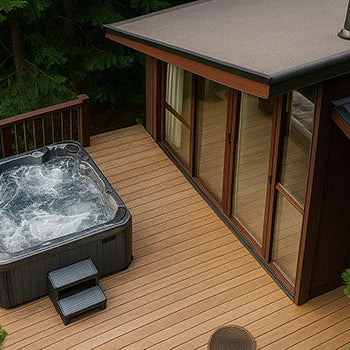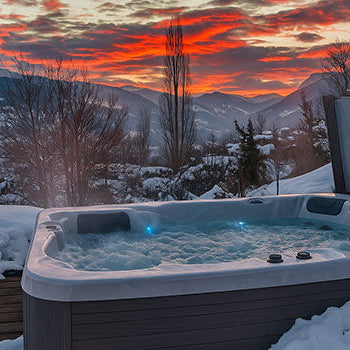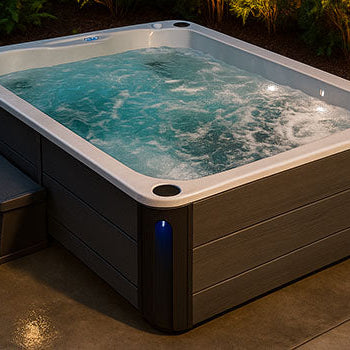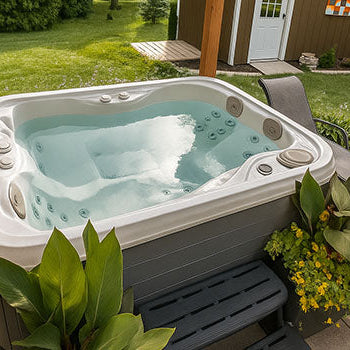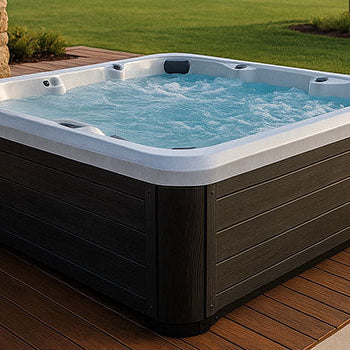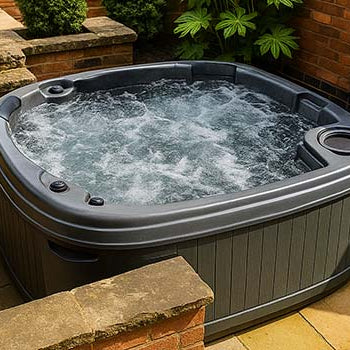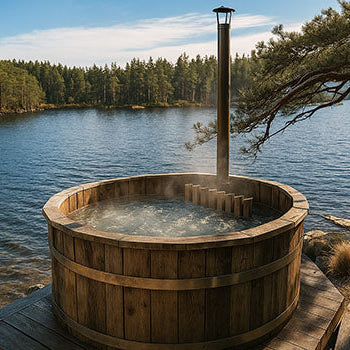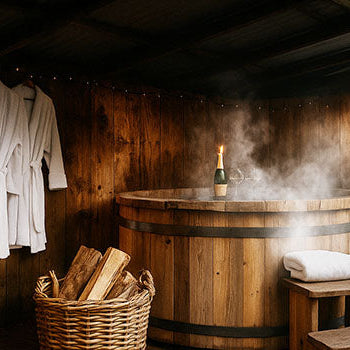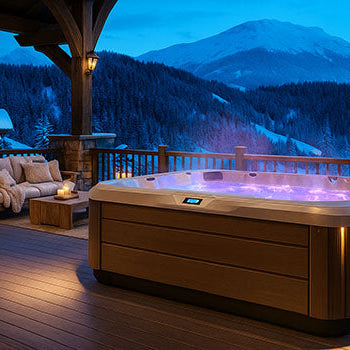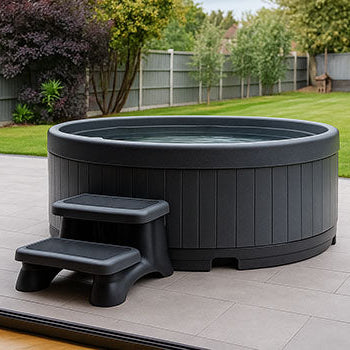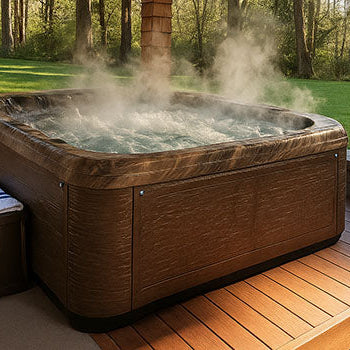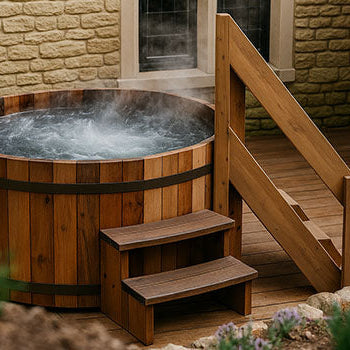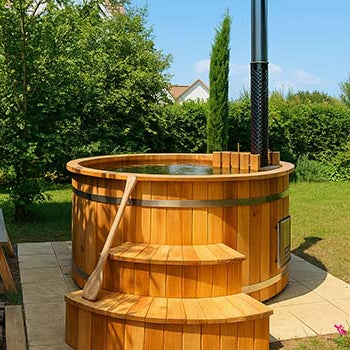In a rush to soak? Turn on the heater, keep the cover on, and run the jets; that’s your magic combo for heating a hot tub quickly. Some tubs, like glossy Acrylic Hot Tubs, warm up a bit faster than chunkier Wooden or rugged Rotomoulded ones, but every setup has its tricks. Curious how to make your soak-ready moments arrive sooner? Let’s heat things the smart way.

Preparing Your Hot Tub for Heating
Ensuring Proper Water Level After Filling
Let’s start with the basics: the water level matters more than you think. If it’s too low, the heater might cut out or overheat. Too high, and you risk splashes every time you move. The sweet spot? Just above the jets and well below the top edge. That’s your safe zone.
Checking Power Supply is On and Safe
Before pressing anything, make sure power is flowing. Check the isolator switch, the main socket, or your circuit breaker. No power = no heat, and we’ve all had that “why isn’t this working” moment. A quick check now saves you a headache later.
Understanding Your Hot Tub's Control Panel
Control panels vary; some have buttons, others touchscreens, and a few just blink cryptically. Take a minute to get to know yours. Look for the heat icon or buttons marked with arrows. It’s not exactly piloting a spaceship, but it’s your launch pad to hot tub bliss.
Setting the Desired Temperature
Locating the Temperature Controls (Up/Down Buttons)
You’ll usually find simple up and down buttons on the display. Pressing them adjusts the heat, easy as that. Keep an eye on the numbers climbing, that’s your tub doing its thing.
Selecting Your Target Temperature (e.g., 37–40°C)
For a warm, comfortable soak, 37°C is ideal. If it’s a chilly evening or you want to loosen up sore muscles, bump it to 38–40°C. Don’t go overboard, though. Your spa has safety limits for a reason, this isn’t a boiling pot of pasta.
Confirming the Heater is Activated (Indicator Light/Icon)
Once set, look for a small light or icon, usually a glowing coil or flame. If that’s lit, your heater’s on and working. No light? Double-check the settings. Still nothing? It might be time to call in backup.
The Importance of the Cover During Heating
Why Keeping the Cover On Maximises Efficiency
Ever tried boiling water without a lid? Exactly. Your hot tub cover traps heat, locks in warmth, and speeds up heating time. No cover? Say hello to higher energy bills and extra-long waits.
Ensuring a Tight Seal to Prevent Heat Loss
Even a small gap in your cover can leak precious heat. Make sure it fits snugly, with no tears or warped corners. Think of it like putting a lid on your winter comfort, secure, sealed, and toasty.

Monitoring the Heating Process
Understanding the Expected Heating Rate (Recap: 3–6°C per hour)
Hot tubs aren’t instant kettles. Depending on size, weather, and heater power, expect the water to heat up by 3 to 6°C each hour. That means a full warm-up can take anywhere from 2 to 6 hours.
Checking the Current Temperature Display Periodically
It’s tempting to peek, but your display has the answers. Check the control panel every now and then to see your current water temperature. No need to open the lid and release the heat.
Patience is Required: Allowing Sufficient Time
We get it, you want in now. But like a good slow-cooked meal, great things take time. Plan ahead, maybe make a cuppa, and let your spa do its thing in peace.
Factors Affecting How Long It Takes (Brief Recap)
Heater Size, Water Volume, Ambient Temperature, Insulation
Several things influence heat-up time. Wooden Hot Tubs hold more water and lose heat faster. Rotomoulded ones are tough but not the best at trapping warmth. Acrylic Hot Tubs usually heat faster, especially in milder climates. Your heater’s wattage, insulation quality, and the outdoor temp all play their part.
Tips for Efficient Heating
Avoid Repeatedly Removing the Cover to Check
Every time you open the lid, warm air escapes. Trust your control panel and resist the urge to peek. Your hot tub isn’t going anywhere, just let it get toasty in peace.
Ensure Filters are Clean for Good Water Flow
Clogged filters slow water circulation, which slows down heating. Give them a quick rinse or swap them out if they’re gunky. It’s an easy win for faster warmth and better water health.
Consider Heating During Off-Peak Electricity Times (If Applicable)
If you’re on a time-of-use tariff, you could save money by heating overnight. Some hot tubs even have timers you can set for low-cost hours. It’s smart, efficient, and wallet-friendly.
Heating After a Water Change vs. Initial Fill
Here’s the truth: cold mains water takes the longest to heat. After a full refill, expect the process to be slower than a standard top-up. If your water was already warm or has been sitting for a while, you'll be back to soaking much faster. Fresh water? Plan.

Conclusion: Heating Your Hot Tub Made Simple
Heating your hot tub doesn’t have to feel like waiting for paint to dry. With the right setup and a few smart habits, you can get from chilly to chill mode without frustration. Keep your water balanced, your filters clean, and your cover sealed tight. Add a dash of patience and some bubbles, and you’ve got the perfect soak waiting just around the corner.
